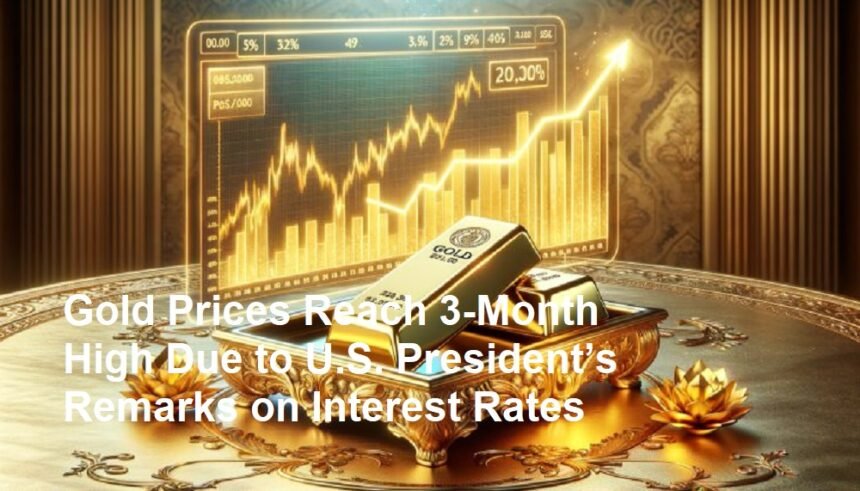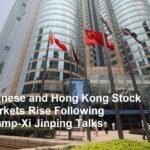Gold prices surged to a three-month peak following recent remarks made by the President of the United States concerning interest rates. Investors have been closely monitoring signals from the U.S. government, especially amid concerns over economic policy and its potential effects on global markets. On Wednesday, the price of gold reached its highest level since October 2024, closing at $1,990 per ounce, driven by a combination of factors, with presidential statements taking a leading role.
The U.S. President’s comments sparked widespread market speculation regarding the future path of interest rates. Investors are increasingly concerned that the Federal Reserve may pause its aggressive interest rate hikes due to economic uncertainties. This uncertainty has given a boost to gold, traditionally seen as a safe haven during times of economic turmoil. Gold, which does not yield interest, tends to benefit when rates are lower or when expectations are that rates will be held steady.
The remarks from the President, who emphasized a cautious approach to tightening monetary policy, were seen as signaling the possibility of a slower pace of rate hikes or even a pause in upcoming Federal Reserve meetings. This led to a weakening of the U.S. dollar, which, in turn, made gold more attractive to investors holding other currencies. A weaker dollar usually boosts the appeal of gold, which is priced in dollars, as it becomes cheaper for international buyers.
In addition to the presidential comments, ongoing concerns over inflation and global economic stability have also contributed to the recent rise in gold prices. Inflation remains persistent in many parts of the world, and central banks have struggled to bring it under control. Gold, historically a hedge against inflation, has seen renewed demand as a result. As the global economy grapples with these challenges, investors are looking for reliable assets that can offer protection from financial instability.
Another factor that has supported gold prices is the uncertainty surrounding global geopolitical tensions. Issues such as the ongoing conflict in Ukraine and rising tensions in the Middle East have kept investors wary, prompting them to seek out safer investments. As geopolitical risks remain high, the appeal of gold as a store of value has strengthened.
Market analysts are now closely watching for further signals from the U.S. government and Federal Reserve regarding their stance on interest rates. Many believe that the pace of rate hikes could slow down in the coming months, which would further boost gold prices. While the future remains uncertain, many experts predict that gold could continue to perform well if the global economic outlook remains fragile.
The price of gold is not only influenced by domestic U.S. policy but also by global factors such as the policies of other central banks, demand from emerging markets, and the overall health of the global economy. With many countries still grappling with inflationary pressures and slow growth, gold’s role as a safe haven continues to be vital.
As we move into 2025, market observers will be closely monitoring both the U.S. and global economic indicators, as well as any new developments related to interest rates and inflation. The price of gold could experience continued volatility, but for now, it appears poised to maintain its upward momentum, supported by both macroeconomic factors and investor sentiment.
In conclusion, gold’s recent climb to a three-month high reflects the growing concerns over economic stability and the potential effects of U.S. interest rate policy. With the President’s cautious stance on further rate hikes, combined with global inflationary pressures and geopolitical uncertainties, gold remains an attractive asset for investors seeking refuge in uncertain times. As the year progresses, the future trajectory of gold prices will largely depend on how these factors continue to evolve.













